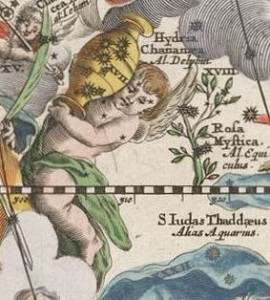My novel Necessary Errors, which will come out in August from Penguin, got an early positive review yesterday from Library Journal. The reviewer, Travis Fristoe, calls the plot “compelling,” the “nuance and dialog . . . an observational wonder,” and the book as a whole “a pleasure to navigate with its large, likable cast.” You have to be a subscriber to read the whole review, but some is visible even without a subscription.
Persistence
Child’s play
In “Playing for All Kinds of Possibilities,” a very fun science article in yesterday’s New York Times, reporter David Dobbs describes how four-year-olds easily beat grown-ups at Blickets, a game invented by child psychologists Alison Gopnik and David Sobel. There seem to have been many versions of Blickets over the years, each designed to ferret out a different nuance of children’s understanding of the world, but in his article Dobbs is describing two that he calls “or” and “and”:
The “or” version is easier: When a blicket is placed atop the machine, it will light the machine up whether placed there by itself or with other pieces. It is either a blicket or it isn’t; it doesn’t depend on the presence of any other object.
In the “and” trial, however, a blicket reveals its blicketness only if both it and another blicket are placed on the machine.
Adults are usually stumped by the “and” version, but it gives children no trouble. Researchers believe that children succeed because they aren’t constrained by “prior biases.” Children don’t have such biases because they simply don’t know much about the world yet, and in their effort to understand, they’re willing to try out all kinds of wild ideas. As they age, they learn that some kinds of hypotheses are less commonly successful than others, and they become less willing to risk belief in these low-probability hypotheses. They grow up to be adults who lose at Blickets. They learn, Dobbs writes, that “‘or’ rules apply far more often in actual life, when a thing’s essence seldom depends on another object’s presence.”
This last claim stuck in my head, and this morning I realized why: I’m not sure it’s true, at least not about a very important category of thing, namely, people. Suppose, instead of playing Blickets with a rectangle, a triangle, and a bridge, we play Lovers with Rilke, Lou, and Gumby. And suppose, instead of placing clay tokens on top of a Blicket Detector, we play the game by leaving our three contestants alone in a room in pairs, to see if they happen to get busy. Rilke + Gumby = nothing. Lou + Gumby = also a blank. But Rilke + Lou = sonnets! Even adults are able to understand that these facts reveal that Rilke and Lou are Lovers, and that Gumby isn’t.
In the psychology experiment, the children were instructed that “the ones that are blickets have blicketness inside,” a somewhat confusing thing to say, given that the property of blicketness is completely fictional and doesn’t correspond to shape, color, weight, or any other physical trait. But adults are able to overcome a similar red herring, in the form of a word for the (also perhaps fictional) essence that qualifies a person as a Lover, namely, love.
As near as I can figure it, any mutually defined, nonhierarchical relationship between people operates in the real world by the same logic as the “and” version of Blickets. You can play Brothers, for example, with Henry James, William James, and William Dean Howells. You can play Rivals with Henry James, William Dean Howells, and Saint Francis of Assisi. You can play Friends with Emerson, Thoreau, and Jefferson Davis. (Note that for all these relationships, we have words for the relevant essence: brotherhood, rivalry, and friendship.)
None of this may matter for Gopnik and Sobel’s conclusion, because it doesn’t alter their finding that children are more willing to try out an unlikely hypothesis about clay triangles than adults are. But I’m not convinced that what children learn when they grow up is that “or” rules apply more often in real life than “and” rules do. It may be that they learn merely that “and” rules tend to be limited to human relationships.
Or it may be that they learn that grown-ups aren’t supposed to think of their toys as living creatures with thoughts and emotions . . .
On gay taxes
Over at Slate, I have an essay about the existential pleasures of filing taxes as a gay married couple.
Seeing stars after sperm squeezing

In my essay “Melville’s Secrets,” I offer an interpretation of a famous passage in Moby-Dick about sperm-squeezing, which concludes with a vision of “long rows of angels in paradise, each with his hands in a jar of spermaceti.” Melville scholar Scott Norsworthy has made a couple of discoveries that he generously describes as a “footnote” to my essay: It transpires that there’s another angel with a jar in Melville’s late prose-poem combination “Under the Rose,” and that, what’s more, both jar-carrying angels may be allusions to a Christianized star-map first published in 1660 by Andreas Cellarius. Norsworthy further wonders whether the row of asterisks that follow the sperm-squeezing passage are meant to suggest a constellation.

